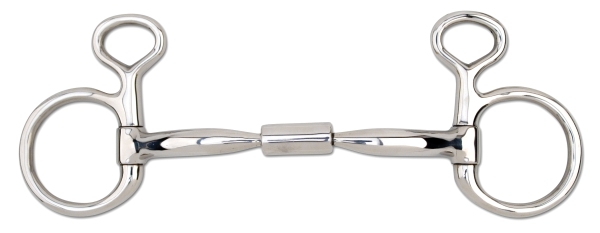I saw a few Dee rings at a show last weekend. I come from hunter land where Dee rings rule and found this odd…hadn’t noticed one at any other dressage show I’ve been to before. I know some bit makers say the Dee rings introduce a little bit of poll pressure but I don’t see how that’s possible. It’s not really different from an eggbutt just a little more stability to the cheek part depending on how big the Dee is.

The Truth about the Baucher Snaffle Bit- rattling the cage...
Is the baucher a leverage bit or a simple snaffle?




 bits
bits 